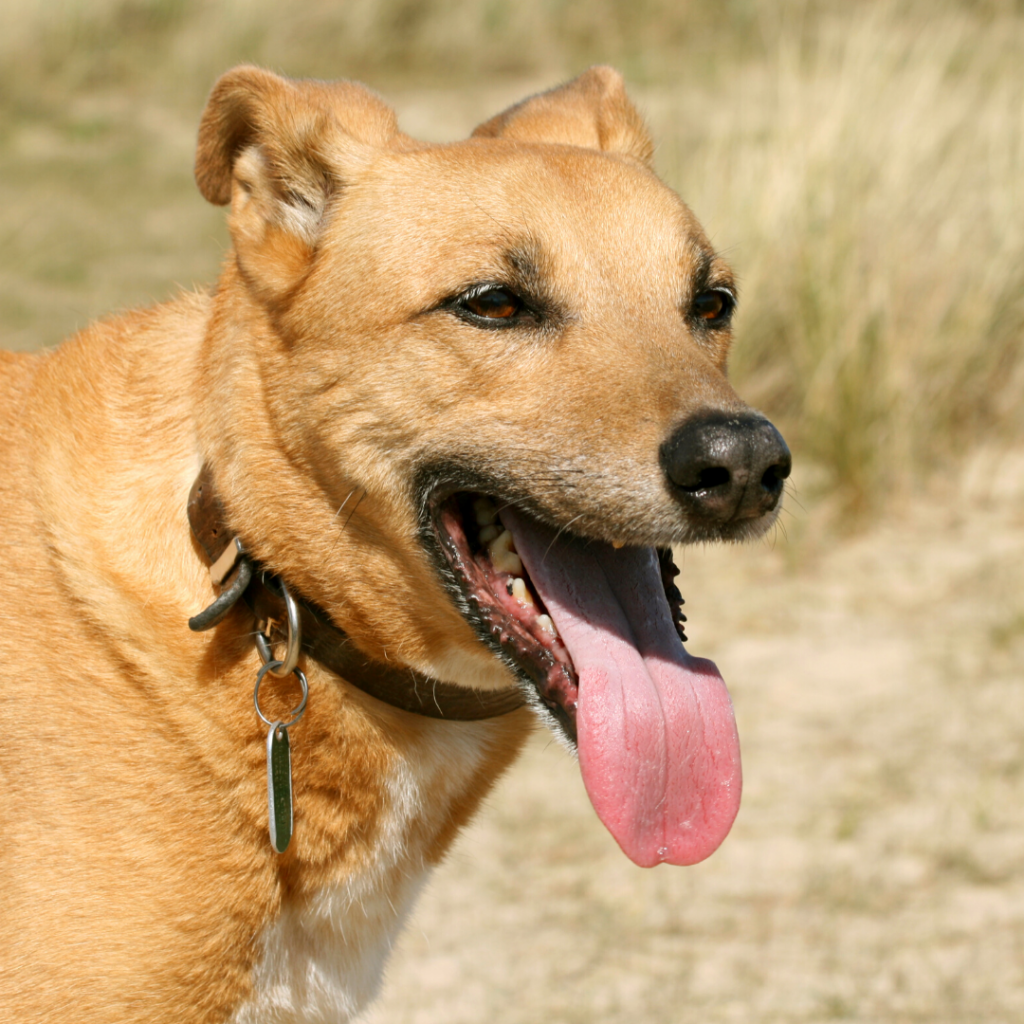We made it to the end of the 7 part series on body language signs to be on the lookout for in everyday life with your dog. The last signal we are going to be discussing isn’t as easy to spot or overtly obvious.
Have you ever paid attention to your dog’s breathing before?
My guess is no because who thinks to watch this basic physical need? The thing is a dog’s breathing pattern can give key insight into his internal emotional state.
Imagine a dog going for a car ride. He happily watches the outside pass by and relaxes on the backseat. As the driver pulls into the vet’s clinic, the dog’s ears go back. The dog lags behind as his owner leads him through the entrance. Once inside, the dog begins to loudly pant, waiting for his appointment.

Is the dog experiencing a temperature change and suddenly feeling hot inside the vet’s office?
No, more likely the dog is feeling some stress. He may have had a bad experience at the vet and so begins to breathe faster.
Alternatively, imagine this scenario.
A dog is on leash at a children’s softball game. Being so fluffy and cute, a group of kids approach the dog to say hi, asking permission of the owner first. The owner says yes and small hands reach for the dog, petting her all over. The dog holds her breath until the children disperse.
This dog is also stressed. The crowd of children was making her nervous so subconsciously she held her breath until the stressor was gone.
Breathing changes are subtle and not something most people look for. It may take some practice to observe but noticing when your dog might be holding their breath or begins to breathe more rapidly, could help you adjust the environment so your dog feels better.
So there you have it!
Those are the seven body language signs that I encourage all dog owners to watch for in their dogs. The seven signs once again are:
1. Closed mouth
2. Head Turn
3. Lip Lick
4. Yawn
5. Shake Off
6. Whale Eye
7. Breathing Changes
Remember with all body language we need to look at the whole picture. While these individual signals can give key insight on their own, when combined, the picture is a whole lot clearer.
Paying attention and responding to these signs begins to open up communication between you and your dog. They begin to trust that you will care for them and listen to their needs as you go through life together.
There are many more signals that we could learn, but these seven will give you a great start to “speaking dog”.


Recent Comments